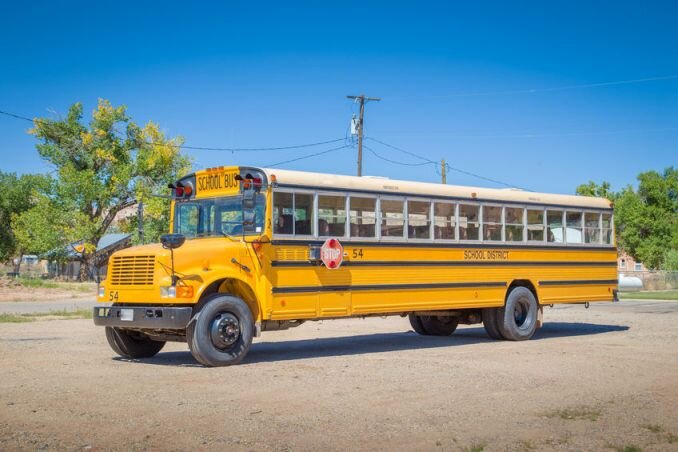Why Are School Buses Yellow? How the Iconic School Bus Color Came to Be
We hardly ever question why the sky is blue or the grass is green, but have you ever wondered why school bus services always paint their buses yellow?
Few people, if any, can envision a reality in which student transportation services didn’t have their colors standardized. As weird as it seems, this wasn’t always the case! School-related group transportation services didn’t always involve bright vehicles, and they were a lot less organized and a lot more hodge-podge back in the day – which all, of course, caused their fair share of problems.
“Old-School” School Bus Services
To understand how student transportation services evolved over time, it’s important to understand what schooling systems of the day looked like. Student transportation services and public education are irrevocably linked; as one changes due to broader societal forces, the other must necessarily follow suit. Thus, for context’s sake, we’ll be discussing the two side-by-side.
Public education in the 1600s was incredibly unorganized. With no wide laws making it mandatory, there was little demand for large-scale student transportation services. Local churches often served as educational hubs in place of the comparatively more modernized one-room schoolhouse. However, as the Industrial Revolution and compulsory education began to dawn on the nation, a need for structured group transportation services arose.
The Rise of Standardized Yellow Buses
The problem: in the 1900s, it wasn’t structured at first. Anything from horses and buggies to actual automobiles were being used to get kids to school. Some students therefore enjoyed quicker transportation than others, and for children unlucky enough to reside in rural communities, getting to faraway schools still could be considered a hassle.
Some country dwellers also shied from the simultaneous modernization of schools, citing the cultural importance of the one-room schoolhouse in their communities and fearing increased taxes, which possibly limited the advancement of student transportation services in some areas.
However, progress and human ingenuity marched on nonetheless.
As the number of one-room schoolhouses declined, student transportation services became more and more necessary, as did the safety of those services. While buses did go through some updates in the 1900s, such as the introduction of steel paneling, there were still no standardized color or safety requirements for these vehicles – which, as you can imagine, were quite big issues, given that these services were becoming more needed by the day!
A conference organized in the 1930s. Standardization was prioritized due to the simplification it lent manufacturers, as well as the increased safety it would give to the growing population of youth. Bus companies and paint companies deliberated to create one school bus model that could be used for all districts, and a crucial part of that process was picking a universal color. They, of course, picked yellow – a specific shade of yellow, in fact, which you’ll see on all school buses to this day.
Why Yellow?
As a school bus contractor we experience the benefits of buses in such a bright and ubiquitous color each and every day. In fact, without such a veneer, school buses and their drivers wouldn’t be able to do their jobs nearly as well as they do!
Boosts Visibility
Widely cited as the conference’s reason for selecting such a hue, yellow’s visibility-boosting properties are something drivers use each and every day. By standing out among a sea of white, grey, black, and red commuter cars, school buses become easy to find for even the youngest child in the worst weather conditions.
Grabs Attention
You’d think it’d be hard to miss a vehicle as large as a school bus, but you’d be surprised how easy it is to get distracted on the road (if you’re not a fully trained class B CDL holder like our drivers). Used even in nature as an eye-catching signal, yellow encourages other drivers to snap to attention and mind their vehicular skills, keeping children safe.
Leads the Way for Students
For youngsters, leaving their parents for a full day to spend time with a bunch of strangers sounds pretty scary. But it’s expected that every child does this, as it’s essentially what full-time school is. There’s certainly a lot to worry about in a small child’s mind, but the bright yellow color of a school bus makes a ride easy to find, crossing a major anxiety off of the list.
Contact American Student Transportation Services for Smart School Transportation
Since we’ve opened our doors, we’ve prioritized a supportive work culture, and as the post above shows, we never forget our roots. This supportive culture passes onto your students in the form of jolly drivers and punctual service, which thus sets those students up for academic success, both in attitude and in physical presence. If your student transportation services need an overhaul, contact our Blaine office online today, or give us a call at 651-621-8900.

